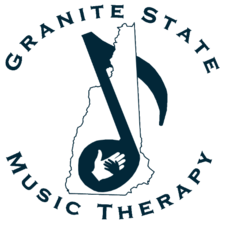Where it all Began: The Early Work of Healing Veterans with Music
As Memorial Day rapidly approaches, and we prepare to honor those who have lost their lives defending our country, it is also a great opportunity to think about the profession of music therapy began. Music started being provided in hospitals during World War I, which led to courses offered at a university for what was called “musicotherapy” for the first time. Once World War II hit, the use of music to heal in hospitals was in full swing, treating both psychological and physical ailments. Since the dawn of civilization, music has been found to have healing properties. However, it was after WWI and WWII when music therapy became an organized profession. In 1950 the American Music Therapy Association was born.
The Idea was Born
There was one woman during WWI who was a bit of a pioneer before music therapy was an organized profession, named Paula Lind Ayers. She worked as a traveling entertainer through the YMCA, which was a very organized operation that put on shows for the soldiers in combat. It was found to reduce anxiety and alleviate homesickness. The performers were staying in less than ideal conditions, and there wasn’t much food. They were sometimes even serving nearby to active combat. Paula used strategies that are very much like the strategies of music therapists today. She felt that singing ragtime wasn’t effective, but that the familiar American tunes seemed to have a better effect. Music therapists today also try to find familiar music that the patient can really relate to, that way they can sing along and actively engage with the music making.
To read more about the Y.M.C.A. and WWI, click here!
Learning to Read Reactions
Paula also used a strategy where she sang a lullaby to calm a soldier down, then moved into a song that was a little more upbeat. In response, the soldier was more willing to participate This is similar to a strategy that music therapists use today known as the “iso-principle” which is the idea of meeting the client where they are at through music, then either slowing the tempo and energy or speeding it up to reach optimal arousal and mood levels. Paula also observed the client while she was singing and adjusted what she was doing to match what the client needed moment to moment. This is one of the key differences between musicians performing and music therapists. Music therapists are constantly adjusting what they are doing to meet the needs of the client instead of going through a set list of music.
To read more about the iso-principle, click here!
Nothing Like It
Paula came back to the states and was a very successful professional performer until the dawn of the Great Depression. However, she was quoted saying that of all the stages she had taken on, the one that touched her heart the most was performing for the soldiers overseas. The magic of watching how her music truly helped the suffering soldiers had an everlasting effect on her.
A Takeaway
Paula Lind Ayers’ name will likely not be found in modern music therapy. She had been aware of the beginnings of course work on music therapy, but was not involved in it and found her own methods. However, her use of live familiar live music in hospitals with soldiers definitely influenced the music therapy field and work with Veterans, and could impact our work in the future as well.
Memorial Day is a time to remember and honor people who have fought and died for our country. Music is such a powerful tool to help connect us all while simultaneously helping us process complex emotions. Between the carefully chosen chord structures and melodies and powerful lyrics, songs that were written for our fallen soldiers have a way of touching our hearts while also making us think of the challenges they may have faced. From the old hymns such as “Battle Hymn of the Republic” to Zac Brown singing about “Stars and Stripes” and “the ones who give their lives so we don’t have to sacrifice,” there are songs for everyone this Memorial Day weekend.
For some inspiration for your celebrations this Memorial Day, here is a list of songs from the tear-jerkers to the lighthearted: click here.
References:
Davis, W.B., Gfeller, K.E. & Thaut. (2008). An Introduction to Music Therapy: Theory and Practice. The American Music Therapy Association, Inc.
Rorke, M.A. (1996). Music and the Wounded of World War II. Journal of Music Therapy. XXXIII(3), 189-2
Reschke-Hernandez, A.E. (2014). Journal of Music Therapy, 51(3), 276-291
Author: Jenni Chute, MA, MT-BC
Editor: Sonya Imperio, MT-BC
Stay up-to-date with our latest resources!
Sign up for our newsletter!
We value your privacy.






